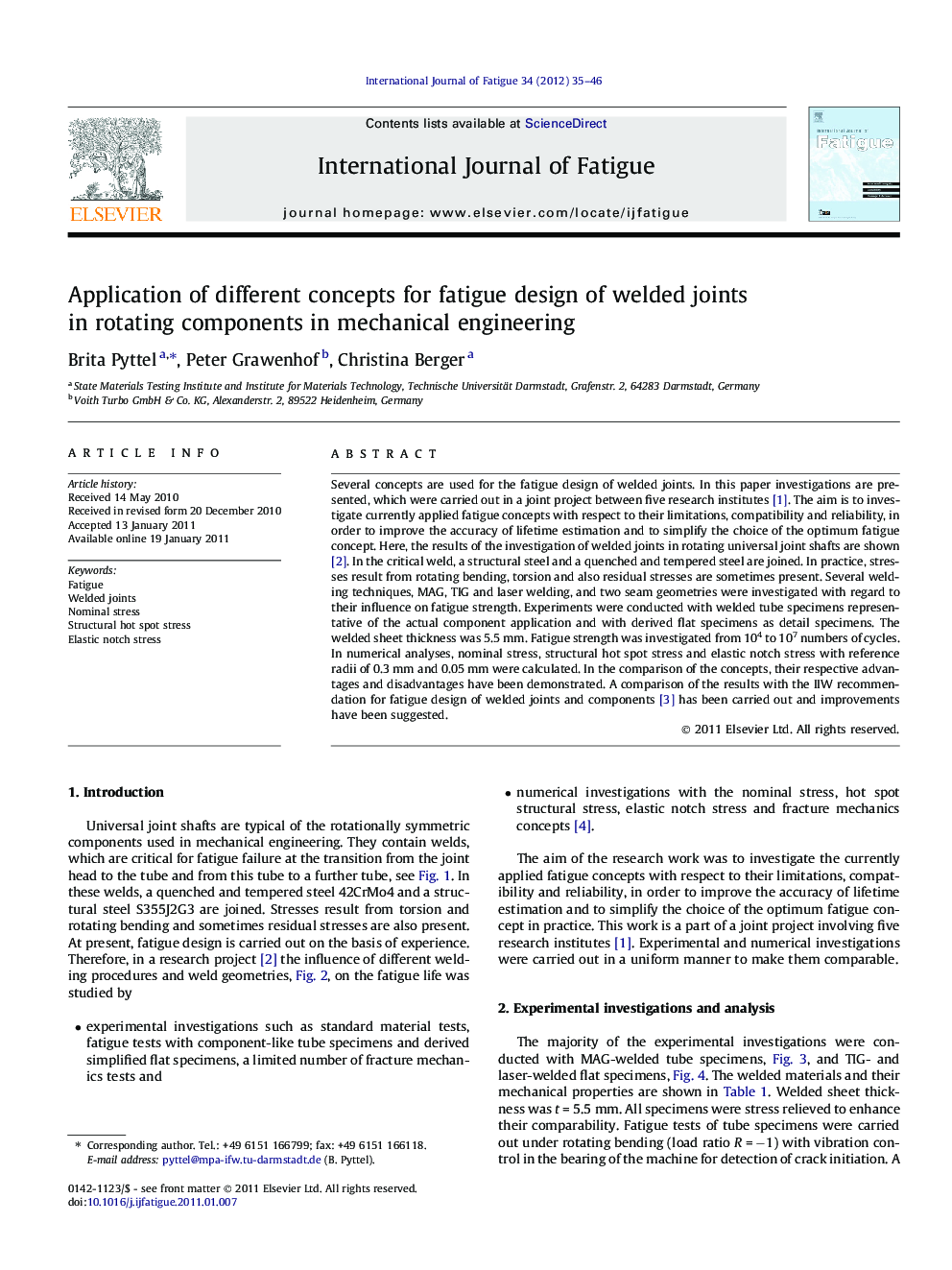| Article ID | Journal | Published Year | Pages | File Type |
|---|---|---|---|---|
| 775380 | International Journal of Fatigue | 2012 | 12 Pages |
Several concepts are used for the fatigue design of welded joints. In this paper investigations are presented, which were carried out in a joint project between five research institutes [1]. The aim is to investigate currently applied fatigue concepts with respect to their limitations, compatibility and reliability, in order to improve the accuracy of lifetime estimation and to simplify the choice of the optimum fatigue concept. Here, the results of the investigation of welded joints in rotating universal joint shafts are shown [2]. In the critical weld, a structural steel and a quenched and tempered steel are joined. In practice, stresses result from rotating bending, torsion and also residual stresses are sometimes present. Several welding techniques, MAG, TIG and laser welding, and two seam geometries were investigated with regard to their influence on fatigue strength. Experiments were conducted with welded tube specimens representative of the actual component application and with derived flat specimens as detail specimens. The welded sheet thickness was 5.5 mm. Fatigue strength was investigated from 104 to 107 numbers of cycles. In numerical analyses, nominal stress, structural hot spot stress and elastic notch stress with reference radii of 0.3 mm and 0.05 mm were calculated. In the comparison of the concepts, their respective advantages and disadvantages have been demonstrated. A comparison of the results with the IIW recommendation for fatigue design of welded joints and components [3] has been carried out and improvements have been suggested.
